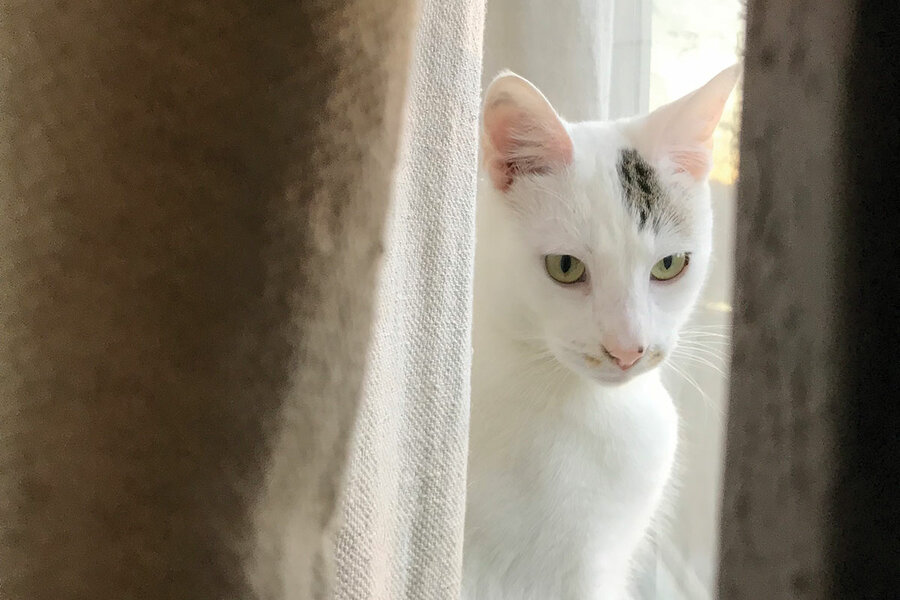How cats teach their humans to be – well, more humane
All manner of cats and their chosen humans – and the otherworldly bonds between them – are tearfully and joyously spotlighted in “The Goodbye Cat” by Hiro Arikawa. The award-winning Japanese novelist delighted readers with her 2017 book, “The Travelling Cat Chronicles,” which inspired the 2018 film of the same title.
The seven soul-renewing stories in “The Goodbye Cat” were translated by Philip Gabriel, lauded for his renderings of legendary Japanese authors including Haruki Murakami. His skills enable English-speaking readers access to Arikawa’s gentle, snarky, aloof, life-giving furry heroes.
The titular “The Goodbye Cat” opens the collection and introduces the feline Kota, deemed the Sakubara family’s “third son.” Rescued initially by the father, Kota becomes protector of younger son Hiromi; for 23 years, Kota has kept Hiromi safe. The cat has been diligently practicing his pawprint seal in preparation for officially signing his contract, which must be arriving any day, to become a nekomata (cat spirit) and remain forever by Hiromi’s side.
In every story, cats find ways to teach their humans to be – well, more humane.
In “Bringing Up Baby,” manga artist Keisuke discovers an unweaned kitten in a discarded box while his wife is at her parents’ home giving birth to their daughter. Saving the kitten teaches Keisuke to be a better father, husband, even artist.
In “Good Father/Bad Father,” Tora arrives as a previously discarded cat into a family that wanted a kitten. When Tora dies, Dad, who prefers hyenas possibly over his own children, is hardly affected, but Mom suffers the loss terribly. To the family’s surprise, Dad rescues a kitten that turns out to be more wildcat than fluffy companion. Ten, as she’s called, eschews all others, but remains surprisingly devoted to Dad, even after his death.
In “Cat Island,” a mysterious older woman helps a young visitor understand his father and stepmother’s relationship, before she reveals her own feline part in their falling in love. In “Night Visitor,” a cat wakes up his human every morning at 3 a.m., leading to the bemused consternation of said human. Tired as the human may be, he can’t say no to Tom’s wee-hour entreaties because Tom’s constant companionship is how they’ll survive the pandemic together.
The final two stories are arguably the highlights, a poignant gift to Arikawa’s audiences already familiar with “The Travelling Cat Chronicles.” Readers need not worry about reading the books in order; both titles are interwoven.
The penultimate story, “Finding Hachi,” sublimely reveals how a tiny, abandoned kitten with a crooked tail was discovered by two best friends. They name the kitten Hachi, because the marking on his forehead resembles the Japanese character for 8. The boys effectively raise Hachi together: Kosuke wanted him first, but his father adamantly refused to allow a cat in their home; Satoru gets him by default but Kosuke visits regularly. A horrific tragedy tears Hachi from his beloved Satoru, but the cat lands with the family of a distant relative in which the youngest child is Satoru’s age – and just as needy for Hachi’s protection.
The final story, “Life Is Not Always Kind,” reintroduces the cat Nana, his name a nod to his hooked tail, which looks like the Japanese symbol for 7. Nana begins by imitating “the greatest-ever cat in Japan, the one in Natsume Soseki’s famous book ‘I Am a Cat.’” Nana recounts his latest journeys with Satoru, who, for a heartbreaking reason, resumes the search begun in the earlier book for a perfect new home for Nana. This time, they’ll return to Tokyo with a photo memorializing their tender, unbreakable bond. The final line of the story – as well as the book – also becomes a promise: “But that’s another story.”
Admittedly, Arikawa is not a literary writer. Her sentences tend to be straightforward, but perhaps that’s also her greatest strength. Her directness inspires emotional responses – even from non-animal lovers – while somehow bypassing sentimentality.
More than her human protagonists, her furry characters exude distinct, memorable, impossible-to-ignore personalities. From one tale to the next, tissues might get soggy and eyes puffy, but the hope that there will be more stories will surely lift readers’ hearts.






